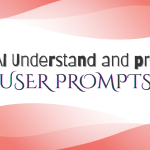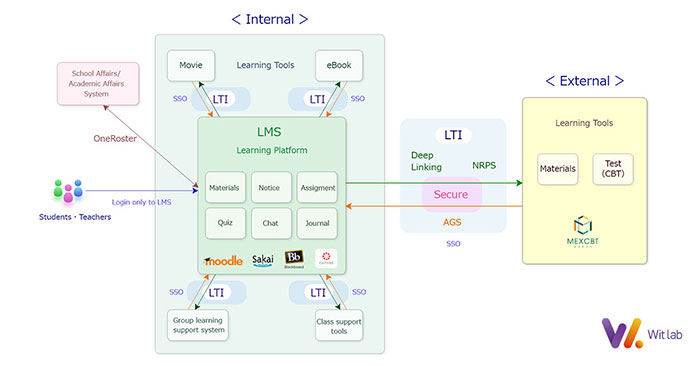
- 2025-03-14
- posted by WIT LAB
- System
What is LTI? A Simple Guide to Understanding Educational DX for Non-Techies
Table of Contents
1. Why is LTI Gaining Attention?
2. What is LTI?
3. What is One Roster?
4. What Can You Do with LTI? (Part 1)
5. What Can You Do with LTI? (Part 2)
6. What is LTI 1.3?
7. What is xAPI?
8. What is LRS (Learning Record Store)?
9. What is Learning Analytics?
1. Why is LTI Gaining Attention?
Since 2020, with the rise of remote learning due to stay-at-home restrictions, education has increasingly shifted to online platforms. This shift has resulted in a massive accumulation of educational data, requiring more efficient ways to manage and utilize it.
In the past, learning-related data was often fragmented based on the tools used. However, as the volume of educational data continues to grow, there is a pressing need for a standardized system to aggregate and utilize this data effectively. This is where LTI (Learning Tools Interoperability) has gained global recognition as an industry standard.
Additionally, the variety of educational tools has expanded significantly. Many essential learning resources—such as video-based lessons, eBooks, and interactive learning materials—often exist outside traditional LMS (Learning Management Systems). As a result, there is a growing demand for seamless integration between these external tools and existing educational platforms.
At our main branch Japanese company Spiceworks, we’ve also observed an increase in discussions and inquiries related to LTI, including:
- Understanding how to implement LTI: Many organizations recognize the importance of LTI but are unsure where to start.
- Converting existing tools and platforms to be LTI-compliant: Institutions want to integrate their current learning materials and tools into an LTI-compatible system.
- Developing new LTI-compatible tools and platforms: Some organizations are interested in creating innovative solutions that align with LTI standards.
For those exploring LTI and considering its implementation, this guide will provide a foundational understanding of its benefits and applications.
2. What is LTI?
LTI, or Learning Tools Interoperability, is a technology standard that allows seamless integration between learning platforms (such as LMS) and external educational tools. It ensures that different learning resources and applications can work together efficiently, enhancing the digital learning experience.
By using LTI, both students and teachers can benefit in several ways:
- Single Sign-On (SSO) Access: With just one login, users can easily access multiple learning tools and resources without needing separate credentials.
- Seamless Integration with External Content: Lessons, assessments, and interactive materials that exist outside the LMS can be directly integrated and used within the platform.
- Centralized Data Collection: Learning activity data from different tools can be aggregated, enabling better tracking and analysis of student performance.
LTI simplifies digital learning by eliminating barriers between different educational technologies, making it easier to create a cohesive and efficient learning environment.
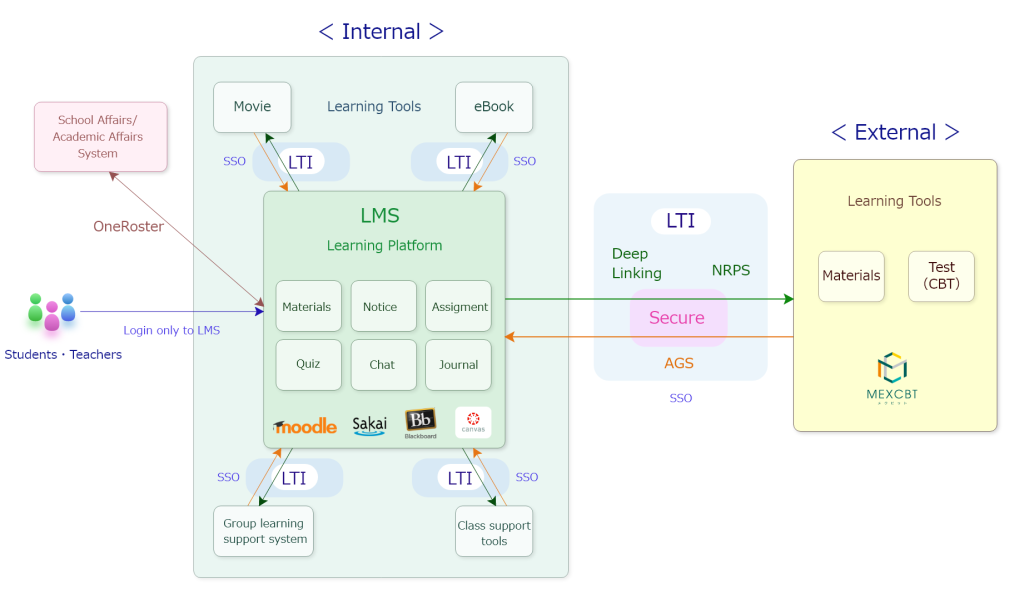
A conceptual diagram has been created to help understand Educational DX using LTI.
Modern versions of LTI (especially LTI 1.3 and beyond) are built on top of OAuth 2.0 and OpenID Connect (OIDC) for secure and standardized authentication and authorization.
- OAuth 2.0
Acts as the authorization framework, allowing the LMS (as the platform) to securely delegate access to external tools without exposing user credentials. - OpenID Connect (OIDC)
Built on top of OAuth 2.0, OIDC adds authentication, enabling the LMS to verify the identity of the user launching the tool. This ensures that user identity and context (like course ID, role, etc.) are securely passed to the external tool.
This layered security model ensures that user data is protected and that only authorized tools can be launched within the learning environment.
Learn more about OAuth 2.0 and OIDC : https://witlab.ph/blog/understanding-oauth-2-0-and-openid-connect-oidc
3. What is OneRoster?
As shown in the diagram, OneRoster is a component that connects school administration and learning systems with an LMS (Learning Management System).
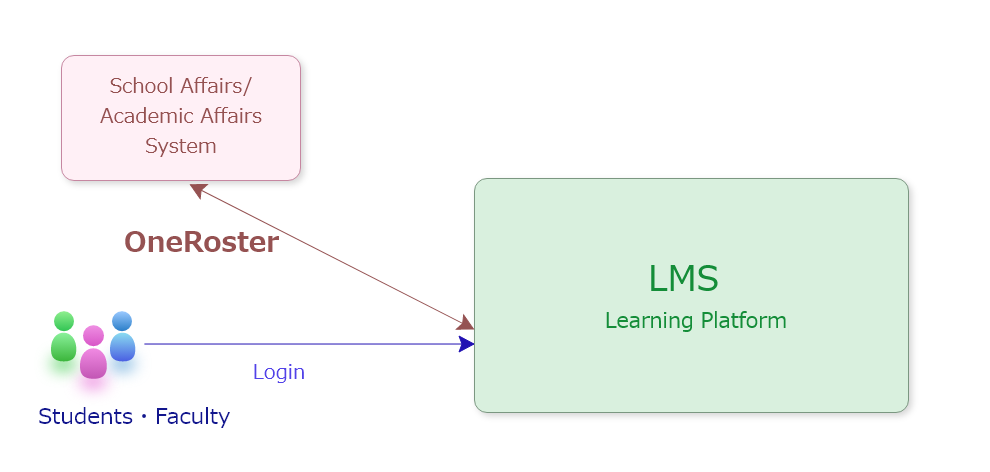
OneRoster is an international standard developed by 1EdTech (formerly IMS Global). It enables secure data exchange between School Information Systems (SIS) and other platforms, including LMS, by managing class rosters and related student information.
The term "Roster" refers to a list of names. In primary and secondary education, OneRoster facilitates seamless interoperability for class lists, grade records, and learning materials. This standard allows SIS and LMS to exchange data efficiently, ensuring smooth integration of administrative and instructional systems.
According to Japan 1EdTech, OneRoster links student and class information with LMS and school administration systems through a standardized ID system, ensuring secure and streamlined data sharing.
4. What Can Be Done with LTI? (Part 1)
- Integrating Learning Tools and Educational Resources
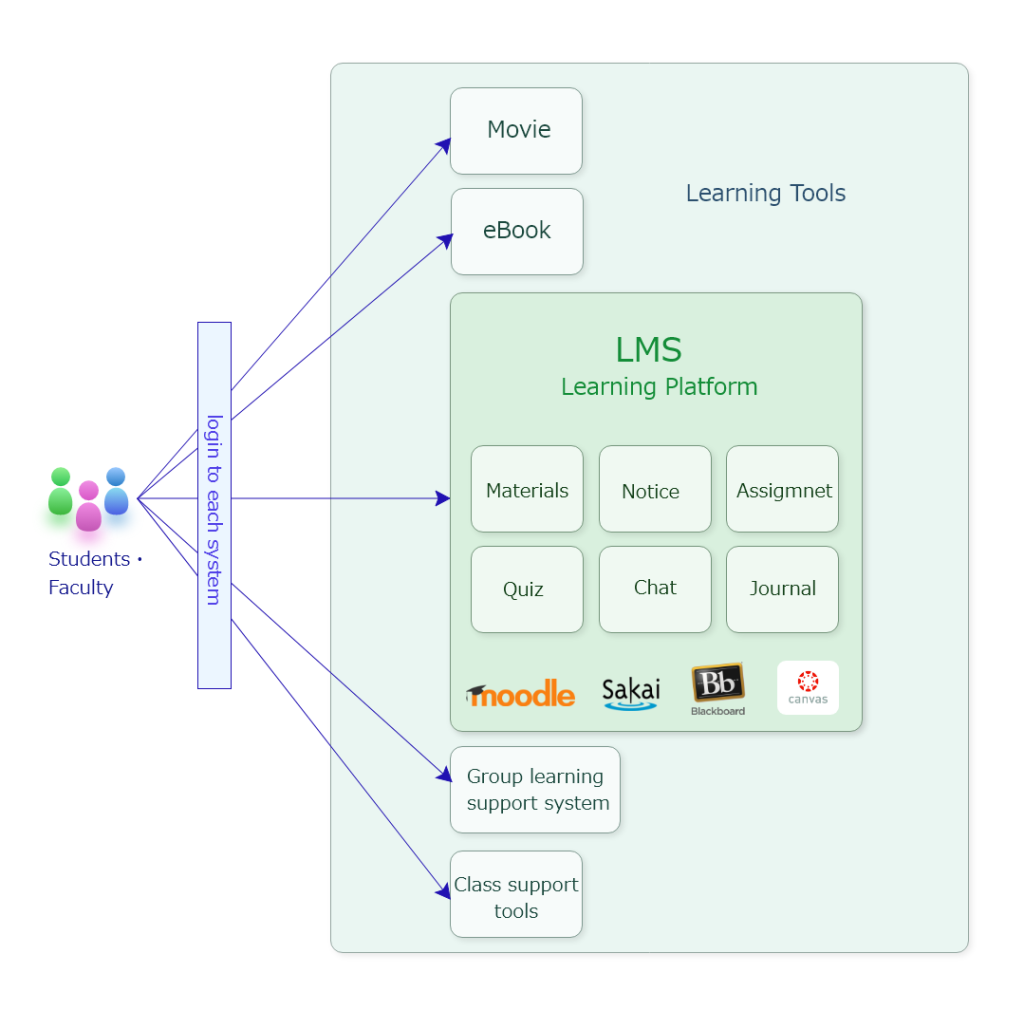
One of the key benefits of LTI (Learning Tools Interoperability) is the seamless integration of learning tools and educational resources within a unified platform.
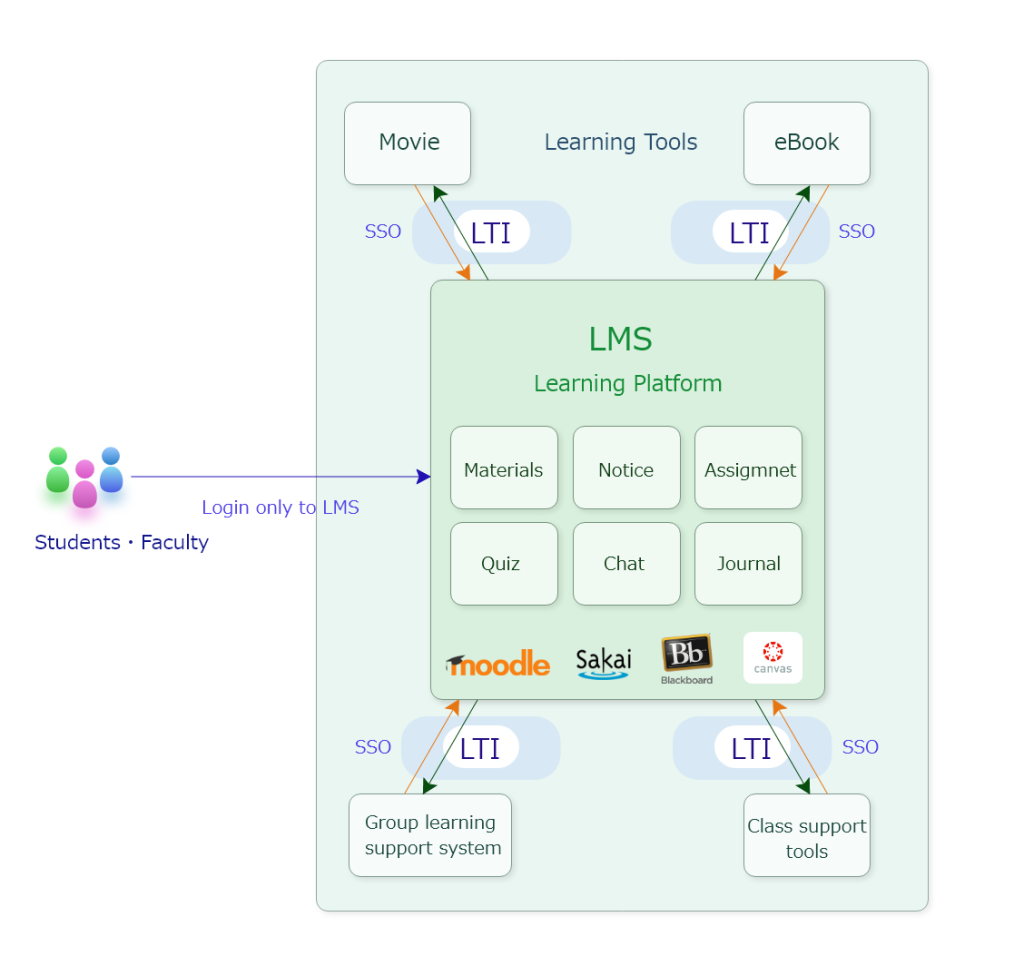
Traditionally, as shown in the diagram, students and teachers needed to log in separately to different learning tools and platforms, creating inconvenience and inefficiency in the modern digital learning environment.
By implementing LTI, users can take advantage of Single Sign-On (SSO) functionality. This means that students and teachers can log in once and gain access to a wide range of learning tools and resources without needing multiple credentials. This simplifies the user experience and enhances productivity in educational settings.
5. What Can Be Done with LTI? (Part 2)
- Integrating with External Tools
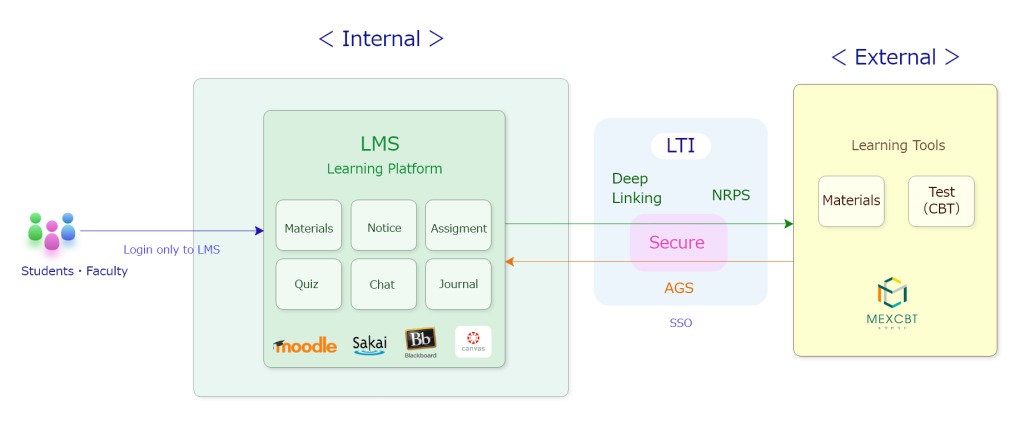
LTI is a technology standard that enables learning platforms to seamlessly integrate with external tools beyond the built-in educational resources.
By leveraging LTI, institutions can extend their learning environment beyond internal tools, allowing external learning resources to be accessed within the school's platform using Single Sign-On (SSO). This eliminates the need for multiple logins and creates a more streamlined learning experience for students and teachers.
With this approach, educators can incorporate high-quality external learning tools into their platform, ensuring that all resources—whether internal or external—are easily accessible in one place.
For example, Japan’s Ministry of Education, Culture, Sports, Science, and Technology (MEXT) has developed an online learning platform that integrates MEXBT and other study tools. By linking these external platforms through LTI, regional education authorities can provide pre-made test questions and Computer-Based Testing (CBT), allowing students to engage in online learning and assessments efficiently.
6. What is LTI 1.3?

While LTI 1.1 already supported Single Sign-On (SSO), LTI 1.3 introduced stronger security and enhanced functionalities for better integration between learning platforms and external tools.
Key Features of LTI 1.3:
- NRPS (Names and Role Provisioning Services)
- Enables the secure transfer of names and role data between platforms.
- Deep Linking (DL)
- Allows platforms to seamlessly integrate external content from learning tools.
- AGS (Assignment and Grade Services)
- Facilitates structured integration of scores, progress tracking, and feedback into the LMS.
AGS Includes Three Key Services:
1. LineItem Service – Allows tools to create columns in the LMS gradebook.
2. Score Service – Enables tools to write scores into the LMS.
3. Result Service – Grants tools access to retrieve current grades from the LMS.
With these services, LTI 1.3 enables a more streamlined assessment workflow. For example, using Deep Linking, an LMS can launch an external exam. The AGS and NRPS features then allow automatic grade reporting from the external tool back into the LMS.

7. What is xAPI?
xAPI (Experience API) is a standard for recording learning experience data across various platforms.
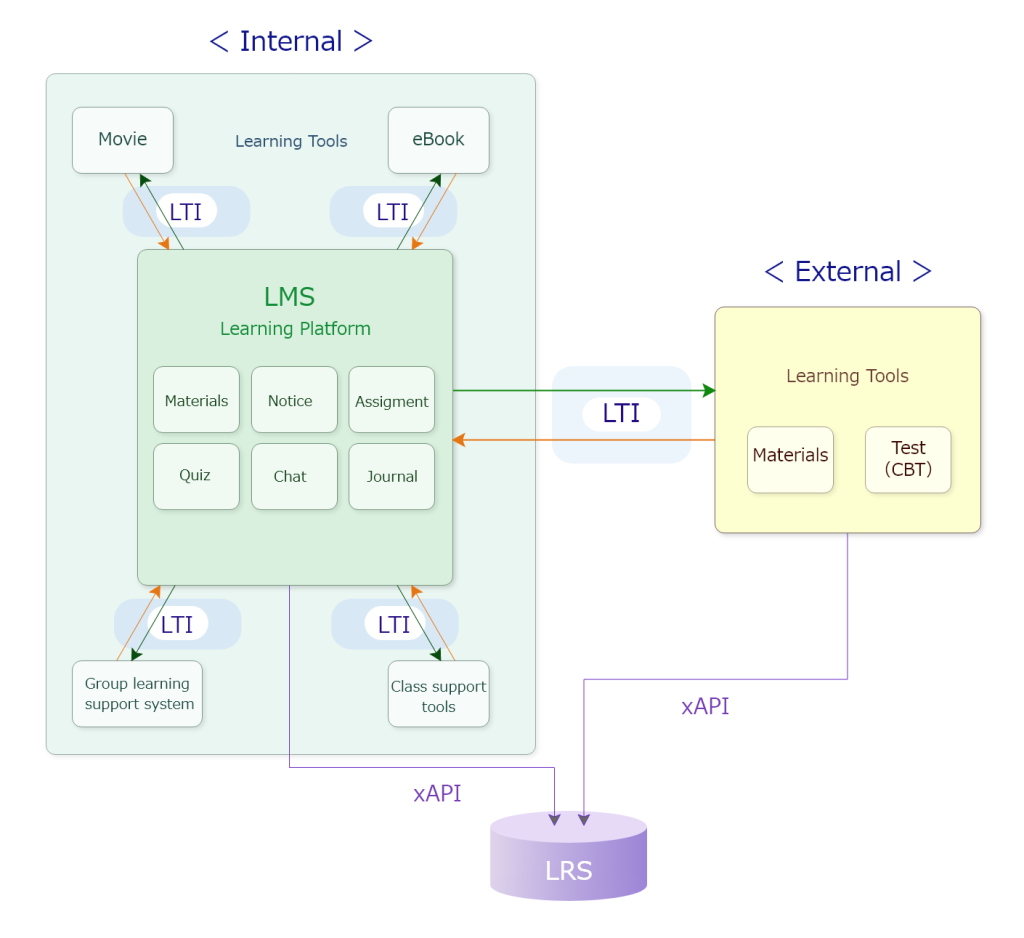
The "x" in xAPI stands for "experience," meaning this standard can track not only LMS-based activities but also a wide range of learning experiences from different environments.
How Does xAPI Work?
xAPI records data in a structured format:
“I did this.”
This format is built using three components:
- Actor (I) – Who performed the action?
- Verb (did) – What action was taken?
- Object (this) – What was the target of the action?
With this structure, xAPI can capture scores, assessments, languages, and nearly any other trackable learning activity.
xAPI vs. Other Standards
Besides xAPI, another learning analytics standard is Caliper Analytics, developed by 1EdTech (formerly IMS Global Learning Consortium).
8. What is LRS?
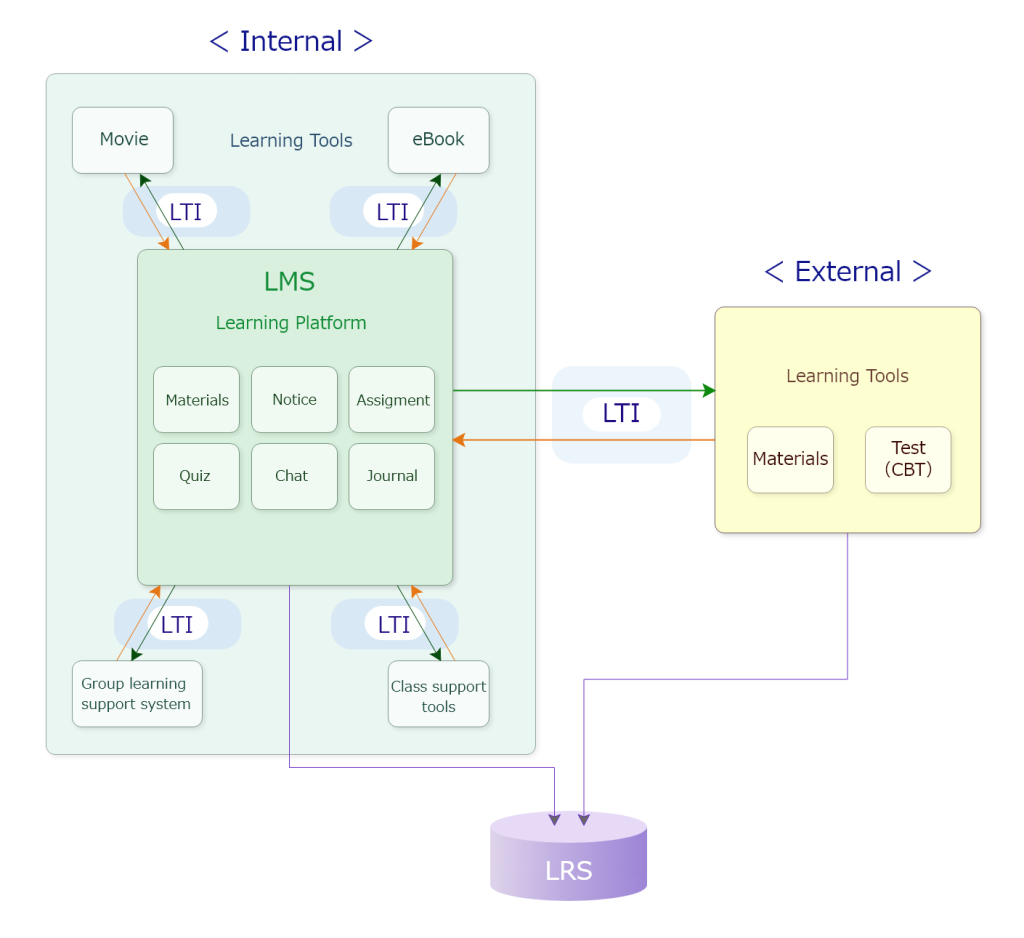
LRS (Learning Record Store) is essentially a database that stores learning records in xAPI format.
How Does LRS Work?
Even when an LRS is integrated into a learning system, learners usually do not notice it directly.
- LRS does not impact learners directly but serves as a backend system that records learning activities.
- The data stored in LRS can be used to analyze and improve learning tools or environments to enhance the overall learning experience.
Open-Source LRS Solutions
There are several open-source LRS options, but one xAPI-compliant and widely used example is Learning Locker.
9. What is Learning Analytics?
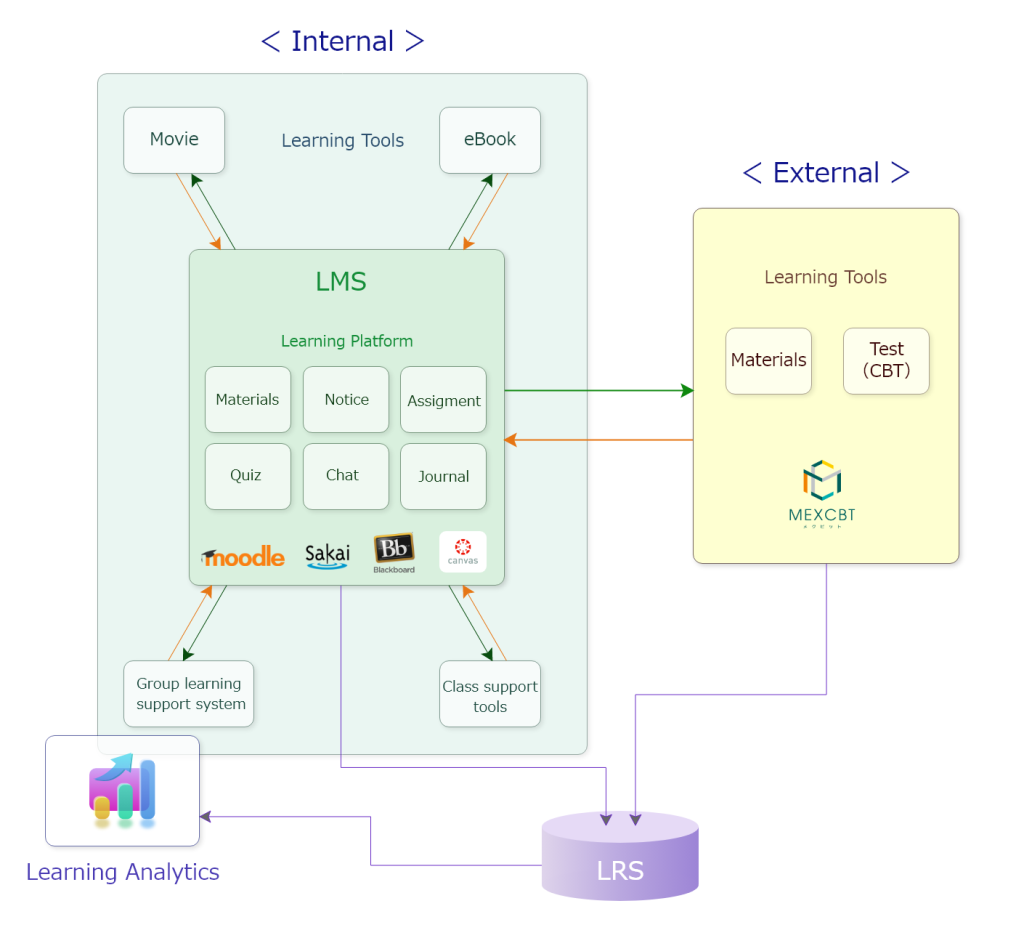
Learning Analytics refers to the process of collecting and analyzing learner activity data (learning process data) to improve educational outcomes.
How It Works:
1. Data Collection – Gathering various data points related to learners' activities.
2. Analysis – Evaluating the collected data to identify patterns and insights.
3. Feedback & Improvement – Using insights to enhance teaching methods, personalize learning experiences, and increase effectiveness.
Ultimately, Learning Analytics helps optimize the learning process by making data-driven improvements in education.
By implementing the international technology standards mentioned in this article, learning systems can not only seamlessly integrate various learning tools but also centralize learning behavior data for in-depth analysis. This data-driven approach can enhance the educational environment by enabling evidence-based improvements.
Towards a Data-Driven Education System
The "Educational Data Utilization Experts' Conference" (Ministry of Education) has proposed a nationwide approach to educational data management. Instead of isolated LRS (Learning Record Stores) for individual schools, they recommend anonymized, centralized LRS that aggregates data from multiple institutions. This would allow for data sharing and evidence-based decision-making to enhance education across the country.
(Reference: "Towards the Utilization of Educational Data" by Hiroaki Ogata, Kyoto University Academic Center for Computing and Media)
Our Company's Role in Educational DX
Our company has long been involved in Learning Analytics research. However, we believe that Learning Analytics is no longer just a research tool but a practical solution that can be applied in real-world education systems. By utilizing data-driven insights, we can advance evidence-based education and improve learning experiences at scale.
Currently, we are actively working on supporting Educational DX by:
- Converting online courses to LTI-based formats
- Integrating LTI into existing systems
- Developing new LTI-supported platforms
- Implementing Learning Analytics to optimize education
If you have any questions or challenges related to LTI implementation, system migration, or Learning Analytics, please feel free to contact us anytime for discussions.
Ref:
1EdTech LTI® 1.3 and LTI Advantage
What is OneRoster 1.1?(1 EdTech)
Ref (JP):
教育・研究支援システムのデジタルエコシステム化〜LTI連携を中⼼に〜 常盤 祐司 2022.08.04
IPS 一般社団法人情報処理学会 :
学習基盤を拡張する国際技術標準 IMS LTI 1.3 第1回 LTI 1.3の機能と意義(常盤祐司・山田恒夫)
